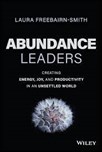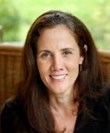- Leadership
Abundance Leadership
Why an abundance mindset is key to leading a creative, high-performing, joyous team, or organization
It is demonstrably possible for organizations to find and develop individuals to be great leaders—able to articulate a clear vision, with the people management skills to motivate exemplary performance and lead strategic implementation—even in turbulent times. However, to become even just a good leader often means learning to think differently and this can be hard.

In her new book, Abundance Leaders: Creating Energy, Joy, and Productivity in an Unsettled World, management consultant and lecturer Laura Freebairn-Smith explains why having an ‘abundance mindset’ is an essential ingredient to great leadership.
Putting self-awareness at the top of her list of required meta-competencies, she demonstrates how to develop an ‘abundance mindset’ and avoid the opposite—a ‘scarcity mindset’—showing why the former fosters the creative, high-performing work environments our economies urgently need.
Books on leadership were for many years focused entirely on strategy and management processes. Freebairn-Smith comes at it from a wholly different place. Her focus is on ‘mindset’—the optimistic or pessimistic mental model leaders adopt and pass on to their followers—and on human relations, and how these fundamentals are the real drivers of organizational effectiveness.
Opening the book with a description of her own leadership journey—from working in a Thai-Cambodian refugee camp onwards—Freebairn-Smith highlights the experiences that led her to the abundance leadership concept. She noticed how some leaders created more energy, joy, productivity, and dedication in their teams than others, and that these leaders, who people loved working for, exhibited specific authentic behaviours and approaches to leading. The abundance leadership model, developed through her decades of working with organizations, is primarily about creating these positive experiences and using them to shape organizational culture.
When opportunities arise or conversely when we face adversity at work, or in our lives, we experience a variety of emotions—from excitement and eagerness, to fear and anxiety. The mental models we hold in our heads determine how we balance these feelings. Our degree of optimism or pessimism can be seen as a spectrum, with most people sitting near the middle. Abundance and scarcity relate to this. An abundance mentality is about believing there are always opportunities, more ideas to try, more places to explore even amidst difficulties. A scarcity mindset tends to the opposite, believing what can go wrong will go wrong and favouring caution.
The extremes of both—be it foolhardiness and delusion or hopelessness and depression—need to be avoided. At times a scarcity reaction is appropriate, abundance at other times. Yet for a leader to motivate and inspire a team or an organization, in what is very much a performative role, abundance should be prioritized where possible. For many this requires some difficult mental rewiring.
Freebairn-Smith lists 26 particular behaviours displayed by abundance leaders—from thinking in the long term and encouraging creativity to listening and learning—and provides guidance on how to develop this more positive mindset and build on its benefits, (though she also explains how abundance orientation is broader than optimism). Central to the model are four meta-competences—visioning; visibility; self-awareness; and managing well—from which competences such as creativity and team team-building and their associated abundance behaviors flow.
A final section of the book offers practical tips and techniques for developing and enacting the distinct behaviors and competencies that abundance leaders exhibit.

A lecturer at Yale and previously at Georgetown, Freebairn-Smith is a Partner and co-founder at OPG—a consultancy firm whose moto is ‘We help people to work together better.’ This declaration could fittingly be applied to her book.
……………………………………………………………………………………………………………
ARTICLES YOU MIGHT LIKE
BOOK REVIEW
Patrick Faniel demonstrates the power of clear restricted focus and the danger of spreading leadership attention too thinly
DEVELOPING LEADERS QUARTERLY MAGAZINE AND WEEKLY BRIEFING EMAILS
































